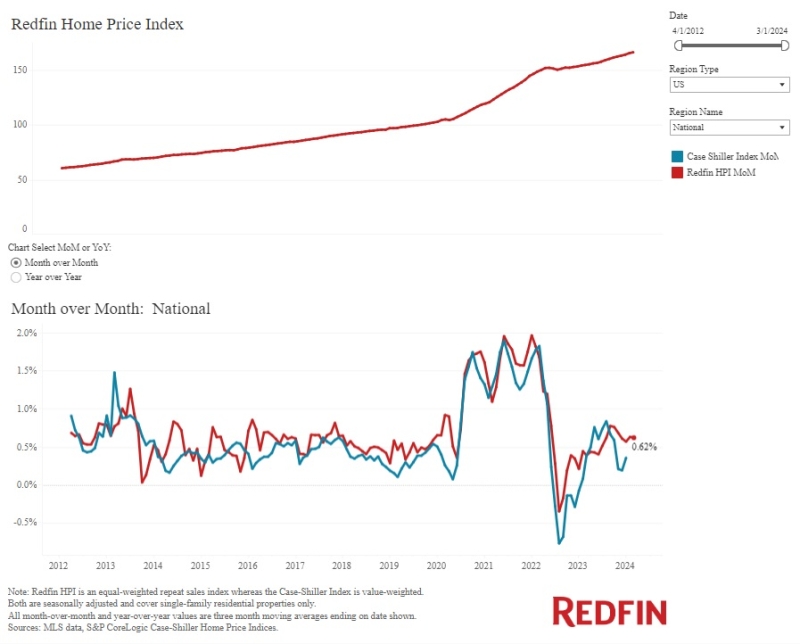Advertisement
The Rationality of the Wholesale Lending Market

The year was 2005. Nearly 80 percent of all loans originated during this peak year of the housing boom were originated by mortgage brokers. What got lost in the post-bubble chaos and finger-pointing was an explanation as to why the vast majority of Americans had sought out mortgage brokers to handle this most important of financial transactions. Historically, the reason for the dominance of mortgage brokers has been the ability to offer the best combination of expertise, experience, price and service. Could it be that American consumers in 2012 are re-embracing the mortgage broker, despite relentless vilification over the past five-plus years? Could it also be true that the recent decision by Wells Fargo, the last of the mega-banks, to leave the wholesale mortgage banking channel, is a natural step in that process?
There is an ancient saying that we should examine as we consider the would-be re-emergence of the wholesale channel in general and mortgage brokers in particular. The ancient saying is: “A bird can no more change its feathers than a tiger can change its stripes.” Simply put, things in the natural world have to be true to their own nature. It is not all-together different in the business world. Individual consumers, workers and companies all have to be true to their own nature and interests. Whether you call this the “invisible hand “of the market like Adam Smith or social Darwinism, the truth is, that people and business organizations run by people make decisions that they believe to be in their best interests. Those who do the best job making these decisions survive and thrive, while those who don’t inevitably fail.
I believe a fair examination of the mortgage origination industry over the past five years clearly supports the contention that the large banks have made decisions that are in keeping with their perceived interests as have mid-level mortgage bankers, mortgage loan originators and individual consumers. Let’s review the past five years and examine the market dynamics and the decision-making of these market participants.
2008-2009
This period was the height of the crisis. It came after the implosion of the sub-prime market the previous year and the bankruptcy filings of dozens of mortgage lenders that served that market (or were unable to restructure given the credit crunch that developed in August of 2007). The media and the big banks, which were under substantial liquidity pressure, began to point fingers of blame at the mortgage brokers. A large part of the reason for the poor performance of loans produced through the wholesale channel was that the large retail mortgage bankers would “cherry pick” the top quality loans to fund on their warehouse lines. This would insure that their loan portfolio performance was acceptable. They certainly did not want to turn away any other business that had a viable channel for origination so they would allow their loan officers to broker the stated income and higher risk loans to the likes of Countrywide, Chase, National City, etc. When the collapse came, the statistics indicated that the “bad loans” were originated through the wholesale channel, i.e., brokers. While these loans were funded through the bank’s wholesale channel, they were not necessarily sourced originally by brokers, but by loan officers working for mortgage bankers. Now that the risky products are extinct, and many brokers have become bankers, the banks want to pat themselves on the back for cleaning up the industry. It was easy for the large banks to single out the group with the smallest voice, the mortgage broker community.
The year 2008 is when most financial institutions around the world discovered their financial stability was in question due to direct or indirect holdings of sub-prime mortgage securities. Scores of small, mid-sized, and even larger, publically-traded lenders found their warehouse credit lines pulled by larger financial institutions and were forced to close. Tens of thousands of mortgage industry workers were out of work. Many of these out of work were new to the industry (less than five years) and were hired to support the surging loan origination volumes of the previous five years.
In 2009, the cleansing of the industry continued. Foreclosure volume peaked at slightly less than four million filings. Mortgage origination volume actually increased, due to rate cuts by the Federal Reserve, and many former brokers and broker-based originators found new homes, flocking to either retail mortgage bankers or even big bank retail lending divisions. For these originators, responding to the demonizing of mortgage brokers and to the deepest recession since the Great Depression, by seeking employment at “favored” banks seems perfectly logical.
As the big banks found themselves on the receiving end of billions in taxpayer support through the Troubled Asset Relief Program (TARP), they continued to blame brokers as the source of the poor quality loans in their portfolios and to curtail their purchases of loans from this source, either through suspension of business (JPMorgan Chase on Jan. 13, 2009), or the layering-on of strict underwriting requirements. For example on April 6, 2009, Wells Fargo imposed a minimum credit score of 720 for wholesale purchases with less than a 20 percent downpayment. They further reduced the maximum debt-to-income ratio they would accept on broker-originated business. Consumers coming to them through their retail lending channel did not face these requirements. Consequently the dramatic drop in the market share of originations by brokers is based on completely rational decisions by consumer to use the large banks.
2010
2010 was the year of new regulation in the mortgage industry. The Dodd-Frank financial reform legislation was debated throughout the year leaving the mortgage industry in great flux. Origination volume was off by 25 percent from the previous year as the industry, particularly the wholesale segment of the industry, lobbied for a place in the new housing finance system that was being created in the halls of Congress. The Dodd-Frank legislation became law on July 10, 2010 and created great fear about the viability of the wholesale channel going forward particularly due to language relating to loan officer compensation and liability for violations of “anti-steering” and “ability-to-pay” provisions.
Many brokers and broker-based originators continued to migrate to bank retail lending divisions or to correspondent lenders due to the difficulties imposed on brokers and their uncertain future. On Oct. 5, 2010, Bank of America took the restriction on third-party originations all the way as they announced they were terminating their wholesale channel.
By 2010, a group of mid-level, non-depository mortgage bankers had emerged which saw an opportunity in the underserved wholesale segment. These mid-level wholesalers believed that the traditional advantages of wholesale lending (lowest variable cost of loan production, best product mix for consumers, best pricing options for consumers, highest service standards for consumers, most flexibility and greater income potential for originators) all still held true despite the regulatory changes. Their focus was to support the remaining brokers that were largely made up of mortgage professionals with long term experience. They also saw that having agency-direct approval status was essential to support the channel by guaranteeing a buyer for originated loans. This bet on the proven advantages of the wholesale lending model, agency-direct status and the capability of experienced, successful, entrepreneurial-minded mortgage professionals also appears well-placed.
2011
This is the year that the future of the mortgage origination industry began to take shape. The loan originator compensation (LO) rule was finalized and took effect on April 5, 2011. Origination volume fell to its lowest point in a decade, and wholesale production fell to its lowest level in 20 years in the first quarter of 2011. Mortgage industry employment fell to its lowest levels of the post-crash period, down 257,000 or 51 percent from its peak in 2006. The brokerage community was now much smaller and more experienced. A survey of mortgage brokers and broker-based originators in 2011 found that 93 percent had been in the industry for longer than five years. Also significant was the fact that every broker-based originator was now licensed. In relative terms, it was fair to say that the most experienced, highly-trained and certified originators worked for mortgage brokers.
Then something began to happen that many did not see coming. Wholesale volume and market share began to rise. From its all-time low market share in Q1 of 2011 of 6.8 percent, wholesale volume saw steady progress: Q2 numbers totaled 7.9 percent, Q3 hit 9.2 percent, and in Q4, it hit the 11.4 percent mark. Originators began migrating in some numbers back to brokerages. It had become apparent that the LO compensation rule would not eliminate the ability to function in this environment and that the product selection, service short-comings and reduced compensation available in large bank retail lending and many correspondent operations were significant. Thus, the return of licensed originators to the broker channel made perfect sense.
2012
Wholesale origination volume has continued to increase since the second quarter of 2011. Mortgage rates have plummeted, causing a refinancing surge. Additionally, home sales and home values have seen improvement bringing new purchase loans as well. Finally, revisions to the Home Affordable Refinance Program (HARP) has opened the possibility of refinancing to many formerly non-qualifiers. On May 25, 2012, the Mortgage Bankers Association (MBA) upwardly revised its origination volume projection for the year by $200 billion.
The result has been industry-wide capacity issues and dramatically increased application-to-closing time frames. While impacting all channels of loan origination, the retail lending operations of the large banks appear to be experiencing the greatest delays.
On Feb. 1, 2012 Citi announced its departure from the wholesale origination channel. Then on July 13, 2012, Wells Fargo became the last of the big banks to announce its departure from the wholesale space. In the case of Wells Fargo, the decision came immediately following a settlement with the federal government over lending discrimination against minority borrowers.
When viewed from the perspective of a large bank with a large retail branch presence which is experiencing capacity constraints, major customer service problems, and which has a proven history of failing to adequately manage its broker relationships, the decision to exit this channel is clearly wise.
Five years after the crisis began there has been a complete vacation of the wholesale mortgage origination channel by the “too big to fail” banks. But this should come as no surprise. The largest banks have always dialed up and down their support for the wholesale channel based on their individual interests at a given point in time. The simple truth is that banks value their retail customers first, as they should, and never have been fully committed to wholesale customers which represent a very small percentage of their overall lending volume. The big banks have allowed their best interests to guide them.
Now that the big banks are gone, the mid-level mortgage bankers, that exist solely to serve the wholesale marketplace, will grow the channel based on their traditional advantages of better customer service, a commitment to technological innovation and adaptability to changing markets and regulation. With a single focus on wholesale lending, these mid-level lenders will help produce better quality, better performing loans. The mid-level mortgage bankers have also allowed their best interests to guide them.
The mortgage originators that have remained in the industry have faced a gauntlet of criticism, licensing, compensation and service challenges that have made their decision to remain in the service of consumers needing mortgage financing quite admirable. As they have sought to stay in this valuable service many have sought employment in the environment they thought was in their best interest, and in the best interest of their customers. More and more, that best interest decision of originators is to work with a mortgage broker.
Consumers always have, and always will choose to get their mortgage financing from that originator who offers the best combination of expertise, price and service. As the recent trend and historical experience bears out, that best interest decision for consumers leans in the direction of mortgage brokers. The rationality of the mortgage market has resulted in its structure reflecting the best interests of its participants.
Mark Greco is president of 360 Mortgage Group based in Austin, Texas. He may be reached by e-mail at [email protected].
About the author





